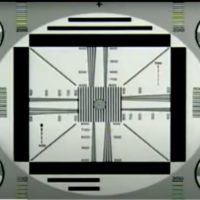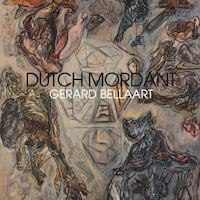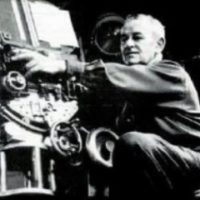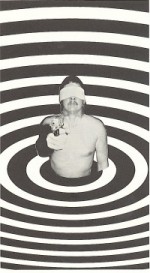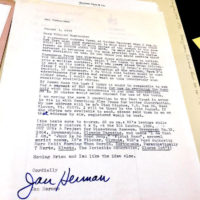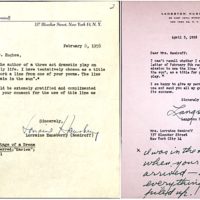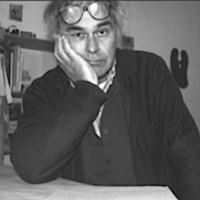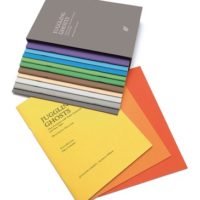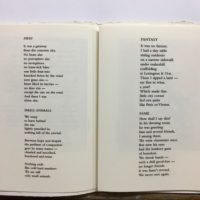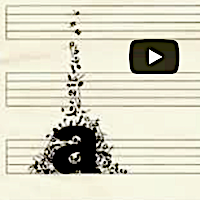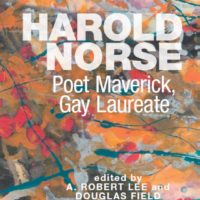Mine have never been finished either. And so . . . an updated, revised, redesigned, and expanded collection in both hardcover and paperback editions is out now, with a new title: “All That Would Ever After Not Be Said.”
Paul Valéry Reminds Us
William Burroughs Reminds Us
‘The Rulers of This Most Insecure of All Worlds Are Rulers By Accident, Inept Frightened Pilots’
‘Not one-man rule or rule of aristocracy or plutocracy but a small group elevated to positions of power by random pressures and subject to political and economic factors that leave little room for decisions. They are representatives of abstract forces that reach power through surrender of self.’
The Uninhibited Bite of Dutch Mordant
With an artist as prolific and versatile as Gerard Bellaart, it is not easy to pinpoint his “style.” His paintings bring a dream world out of hiding. His drawings look spontaneous. But you can be sure they are supported by years of deep training. You can also be sure they are not “easy” viewing.
Remembering Diane di Prima
A memorial issue of the Swiss magazine Fabrikzeitung pays tribute to her poetry.
‘she whose face we have never seen
she whose body is a door to the world . . .
stars are the seed pearls she sets on her flesh
they are the milk of her breasts & the juice of her love
her orgasm shakes the dark worlds to their depths’ — DdP
‘A Low-Rent Shangri-La Beyond Borders’
‘As the steep streets bow to the river,
I have been falling through holes
for some months seeking a new underworld …’ — David Erdos
Permit Me a Moment to Bask in This Review
“This biography is truly exceptional in its prose and subject matter. If you are an avid movie fan, you’ll enjoy the wealth of information about a truly brilliant director. If you simply enjoy non-fiction material, this will be a great read as the writer presents a beautifully written story on so many levels. It’s the type of book you never want to finish.” — Hope Goldsmith
Scandalous Biographers and Their Publishers
Recent literary scandals raise difficult questions for authors, publishers, and readers. Do they have an obligation to consider a writer’s personal conduct when making decisions about whether to publish or buy a book—or do they have an obligation not to? Ruth Franklin in conversation with Laura Marsh, Tim Duggan, Katha Pollitt, and Ian Buruma.
Mustill Artworks Newly Archived at Emory University
Norman Ogue Mustill (1931-2013) was an American artist, who primarily used collage as his medium. He was born in Montreal, Canada and was educated at the Montreal Museum of Art and Ecole Des Beaux Artes. During the 1950s, Mustill lived in New York (New York), Los Angeles (California), and Mexico City (Mexico). He moved to San Francisco (California) in 1960, which led to collaboration with filmmakers, painters, and poets of the beat generation. Mustill was not interested in being a public figure and avoided the art world. He adopted the middle name “Ogue,” which he took from the fashion magazine Vogue to protest the fashionable.” — Stuart A. Rose Manuscript, Archives, and Rare Book Library
Mining the Archives
‘Un-American Express’ — It Never Happened
Speaking of literary archives, you never know what will turn up. This letter from a half-century ago, for instance: It was discovered the other day at Emory University about two literary projects, one of which came to fruition, while the other never did.
Beinecke’s Sweet Tweet
Lorraine Hansberry to Langston Hughes and His Reply
An eagle-eyed member of Straight Up’s staff of thousands, unpaid but indefatigable, noticed this exchange posted on Twitter by the Beinecke Rare Books and Manuscript Library at Yale University, and sent it along. Perhaps you saw it? If not . . .
A World of Trouble
Cityscape East River NYC (9-20-2021)
A pair of NYPD patrol boats were stationed in the East River at the approach to the 59th Street Bridge. Each was fitted out with a manned, high-caliber machine gun. There was no boat traffic as there usually is — no barges going upriver, no tug boats churning heavy wakes behind them, no sail boats moving lazily with the current, no speedboats — all apparently prohibited due to the opening session of the U.N. located nearby on the Manhattan bank of the river. Many streets in the surrounding neighborthood were cordoned corral-style into single-file walk lanes. Cops were everywhere, and life was calm and complacent and inconvenient in a world of trouble.
Moloko to Publish Dutch Mordant
“All drawing from the imagination I’d consider a form of automatic drawing; if it exists, it will exist only for the first time. … I think [my images] arise from the instinctive tendency to not look for semblances or analogies. Meaning, to find all that happens in spite of me—imagination versus verisimilitude. One forever seems to be looking for a dimension not directly visible and through the technique at one’s disposal express the sensation that evokes.” — Gerard Bellaart
Remembering 9/11
Starting when the news broke, my report grew longer by the minute. It ran, updated in real time, as MSNBC.com’s cover story. I cobbled together eye-witness accounts — my own, those of others from MSNBC and the Associated Press — writing and rewriting as the catastrophe mounted. Twenty years later I’d rather not reprise all the horrors.
Heathcote Williams’s Credo
‘If Poetry Isn’t Revolutionary, It’s Nothing’
This is a collectors alert. Open Head Press is about to release “Juggling Ghosts”, a series of pamphlets of previously published poems and essays by Heathcote Williams in a slipcased, numbered edition of 500 copies about his encounters — live and otherwise — with William Burroughs, Harold Pinter, Dylan Thomas, Sinclair Beiles, Christopher Marlowe, Lord Buckley, Christopher Smart, Percy Bysshe Shelley, Michael Lesser, Alan Turing, Diogenes of Synope, William Blake and the Tigers of Wrath.
Making a Chapbook of Poems and Drawings
A high-speed look at the dummy shows the pages in sequence. See the spreads on Barcham Green paper ready for sewn binding.
Mustill’s ‘Critic’ in Motion
Norman O. Mustill made “Critic” on paper, in 1971. He didn’t put much trust in critics. The musical symbols cascade down the page, the letter decays beneath them, and they all disappear into nothingness. I take it as satirical comment.
Essays in the Works About That ‘Bastard Angel’
The late poet Harold Norse, né Rosen, was a born maverick. His splendid Memoirs of a Bastard Angel is a delicious account of his life and involvement with too many literary legends to name. But what the hell, here goes: William Carlos Williams and W.H. Auden, Tennessee Williams and James Baldwin, Robert Graves and Paul Bowles, Anaïs Nin and Dylan Thomas, William S. Burroughs and Charles Bukowski. I’ll stop there. Now Clemson University Press is planning to bring out a collection of personal and scholarly essays about his poetry and his life, edited by A. Robert Lee and Douglas Field.


